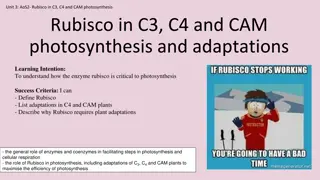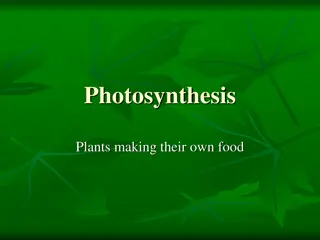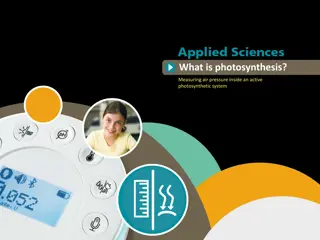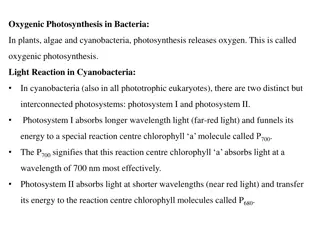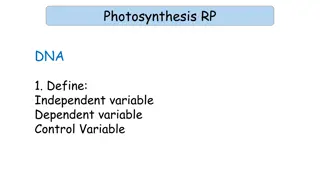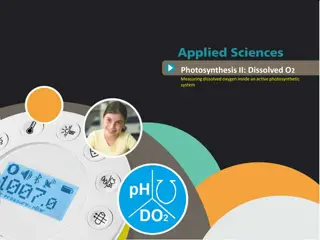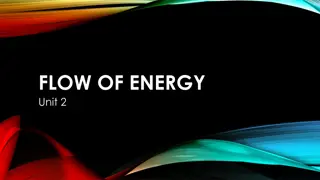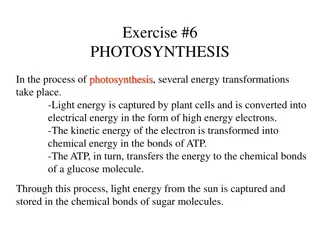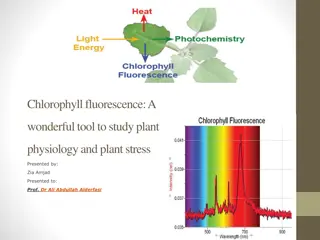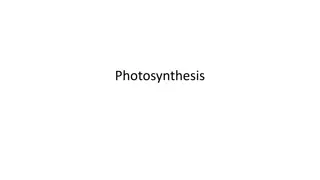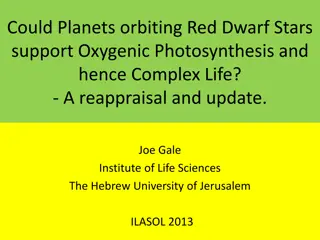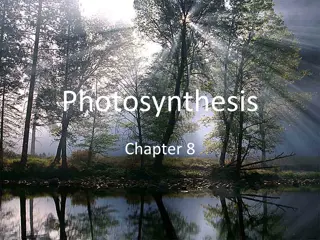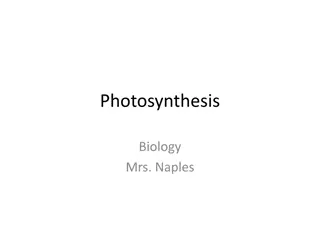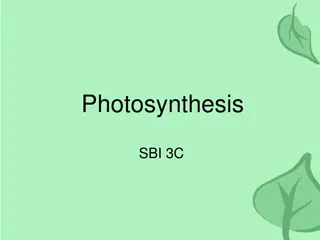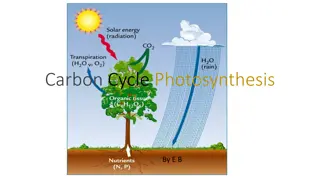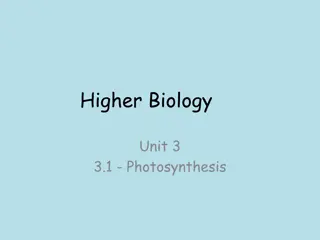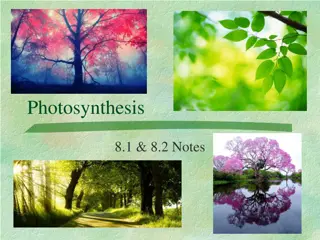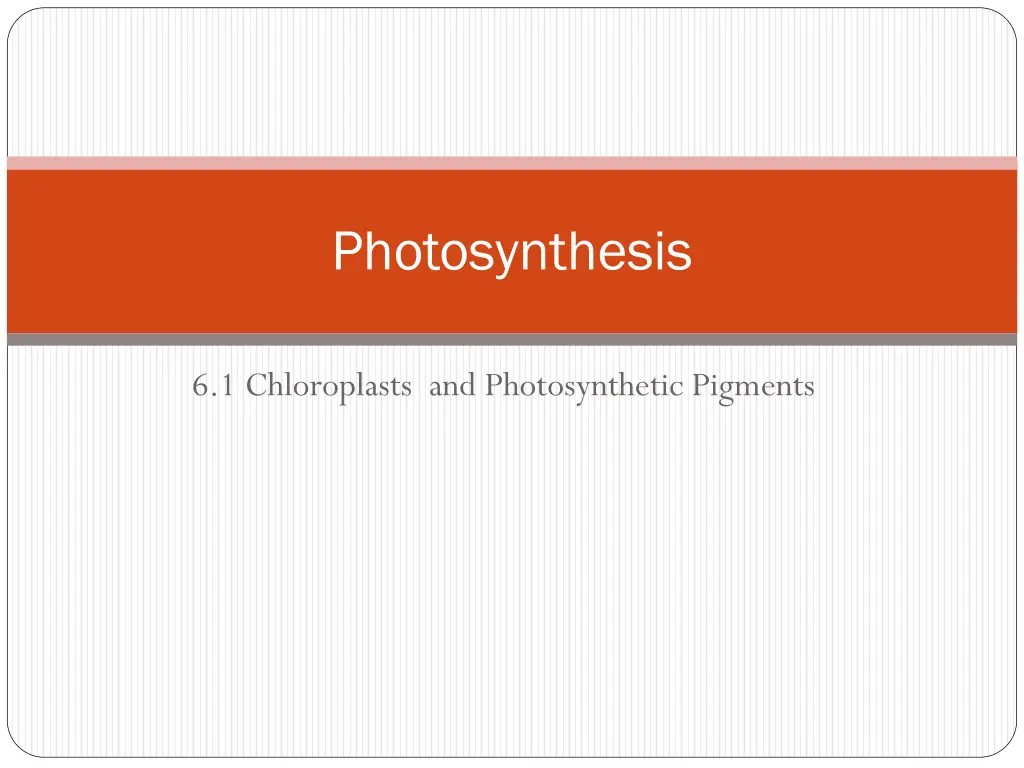
Chloroplasts and Photosynthetic Pigments in Photosynthesis
Explore how chloroplasts and photosynthetic pigments play a crucial role in the process of photosynthesis, converting sunlight into energy for living cells. Learn about the dependence on light, the role of pigments in capturing solar energy, and the significance of chlorophyll in absorbing photons for energy transfer.
Download Presentation

Please find below an Image/Link to download the presentation.
The content on the website is provided AS IS for your information and personal use only. It may not be sold, licensed, or shared on other websites without obtaining consent from the author. If you encounter any issues during the download, it is possible that the publisher has removed the file from their server.
You are allowed to download the files provided on this website for personal or commercial use, subject to the condition that they are used lawfully. All files are the property of their respective owners.
The content on the website is provided AS IS for your information and personal use only. It may not be sold, licensed, or shared on other websites without obtaining consent from the author.
E N D
Presentation Transcript
Photosynthesis 6.1 Chloroplasts and Photosynthetic Pigments
Dependent on LIGHT Photosynthesis: process that converts _______________________ from the Sun into _____________________ energy to be used by living cells. Light: type of ______________ occurring in individual packets of energy called _____________ Photons: corresponds to particular _________________________ - short wavelengths = _____________ energy - long wavelengths = _____________ energy Light a mixture of wavelengths (ie. Separate through prisms)
Photosynthesis & Cellular Respiration Photosynthesis & Cellular Respiration Plants only living organisms capable of producing own food (____________________). Photosynthetic organisms capture energy and _____________ it in bonds of ___________________ - energy passed on to other organisms in _______________________ ALL organisms release energy stored in glucose by __________________ ________________________. - _______________ cellular activities Carbon dioxide + water + energy glucose + oxygen
Pigments Special ___________________ in photosynthetic organisms capture ___________________ from solar energy - begin reactions of ______________________ ________________________: absorbs photons from solar energy - types of chlorophyll: - chlorophyll a ___________________ light-absorbing pigment _______________________ pigments: absorb photons ______________________ - chlorophyll _____: absorbs photons chlorophyll a does _________ or does ________________ - __________________________: transfer energy absorbed into a molecule of chlorophyll ______
Chlorophyll Both a & b absorb photons with energies in ____________________________ and _______________ regions Reflect (transmit) those with wavelengths of ________ nm to ___________ nm. - we see this as ____________________ light Chlorophyll a only pigment that can __________________ energy from ________________________ to the reactions of _________________________.
Chloroplasts Photosynthesis occurs in the ___________________ - must contain ___________________________ - must obtain ___________ and ____________ - must capture ____________________ energy chlorophyll found in _________________________ of _____________________________ - chloroplasts located in ___________________ and ____________________
Chloroplasts Approximately 3 8 m in length, 2 3 m in diameter Enclosed by inner and outer _______________________ Stroma: ___________________________: connected and stacked sacs within stroma Grana: Lamellae: ___________________ thylakoids that connect ____________________ Thylakoid membrane: where ______________________ occurs - contains _________________________ and __________________ transport chains Structure of thylakoid system: - increases ___________________________ of thylakoid membrane - increases ______________________ of photosynthesis


